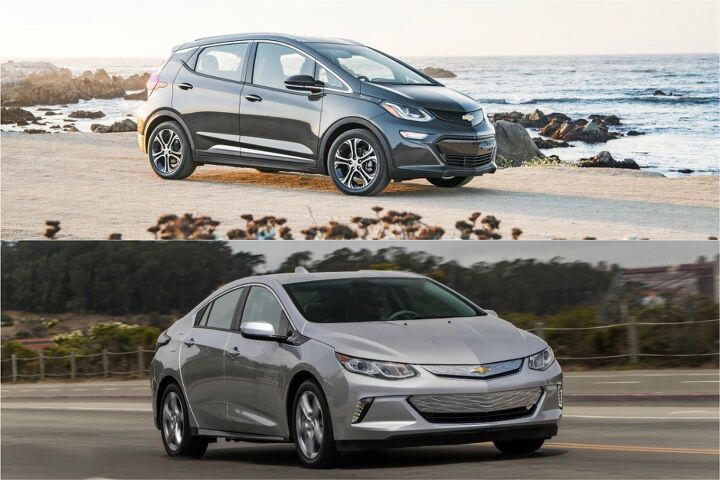Confirmed: Chevrolet's Bolt Loses Its Full Tax Credit In April, but Not the Doomed Volt

Good news for would-be Volt owners? Not really. Chevrolet’s soon-to-be-discontinued plug-in hybrid won’t live long enough to suffer the indignity of a halved federal EV tax credit. It’s dead in March, though remaining examples of the car everyone should want will no doubt linger on lots through the spring.
On Wednesday, General Motors announced, as expected, that it became the second automaker to pass the federal government’s 200,000-vehicle threshold, kicking off a three-month countdown to a chopped incentive.
The momentous moment came near the end of 2018, Automotive News reports, meaning a full quarter must pass before buyers stand to lose the $7,500 incentive offered on the all-electric Chevrolet Bolt and Volt. Come April, Bolt and remaining Volt buyers stand to receive just 3,750 of their fellow taxpayers’ dollars. Six months after that, the credit halves again, then vanishes.
Of course, General Motors execs probably aren’t toasting this green car milestone, as, much like Tesla (and Mitsubishi in Ontario), it will now have to resort to sweetening the MSRP pot on the manufacturer side. Then again, depending on the Bolt’s profitability, maybe a customer disincentive is a good thing for GM finances.
After passing the 200,000-eligible-vehicle mark in July, Tesla saw its full tax credit disappear on New Year’s Day, forcing the company to slash stickers by $2,000 across the board. Next in line to start the countdown is Nissan.
In base LT guise, the Bolt uses federal generosity to lower its MSRP five bucks below the $30k barrier. A halved credit puts the Bolt LT’s base price at $33,745. The improved 2019 Volt, condemned to death via falling sales (an affliction shared with its Detroit-Hamtramck Assembly factory mates) retails for $34,395 after delivery but before the $7,500 credit. It’s because of the Volt’s generous, 53-mile range that the car, which still packs a 1.5-liter four-cylinder for longer trips, qualifies for the full kitty.
Despite claiming its future lies in electric propulsion and computer control, GM’s short-term worries must lie with competitors who fall well below the tax credit threshold — most notably Hyundai, whose Kona EV crossover goes 258 miles between turns at the plug. Entry price for that vehicle, after incentives? An attractive $28,950.
[Image: General Motors]

More by Steph Willems
Latest Car Reviews
Read moreLatest Product Reviews
Read moreRecent Comments
- Kwik_Shift_Pro4X Mazda CX-5 all the way.
- Spookiness The Mazda interior really is nice. I recognize the rationale for the Mazda infotainment interface design in lieu of a touch screen, but the filthy masses have spoken. As with the rotary engine, it's time to move on. To sell more cars they'll need to have touchscreens. Other carmakers have evolved beyond the iPad-screwed-on-top-the-dash look, so I'm sure Mazda can come up with something aesthetically pleasing and user-friendly. (Another quibble: I really don't need or want AWD, so I wish it wasn't forced. But again, the masses have spoken.)
- Lou_BC “We are always listening to the customer. "You sayin' the baller/gangsta types don't want Escalades on 24's that don't make vroom vroom rumbly sounds?
- AZFelix I shall fully endorse the use of autonomous cars on public roads once they have successfully completed my proposed Turing test for self driving vehicles. This test requires the successful completion of an at fault incident and accident free 24/7 driving session in Buffalo and upstate New York from October 1st until March 31st, and throughout the city of Jakarta, Indonesia for one consecutive year. Only Level 1 and Level 5 vehicles are permissible.
- Lou_BC I'd go Rav4. No Mazda dealer in my town and from what I've seen, Mazda's tend to rust.


































Comments
Join the conversation
I think the truth about electric cars is more nuanced. If you ever wake up in an apartment in downtown Paris, open the window, and smell, you realize that there must be a great future for electric cars. But here in Ohio and in much of the US, they just aren't a sensible proposition.
I wonder how a certain bearded pretentious douchebag will try to spin this in the next Chevy commercial...